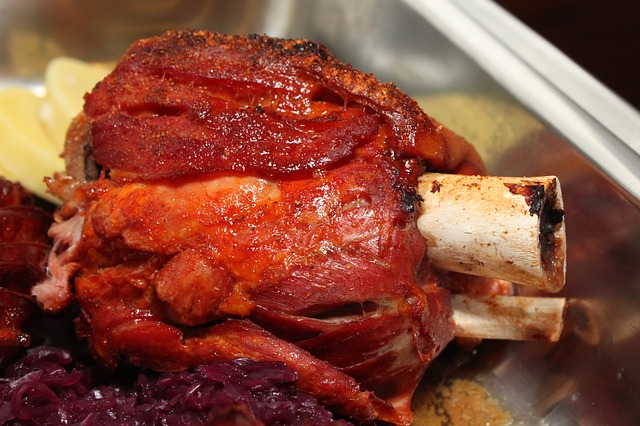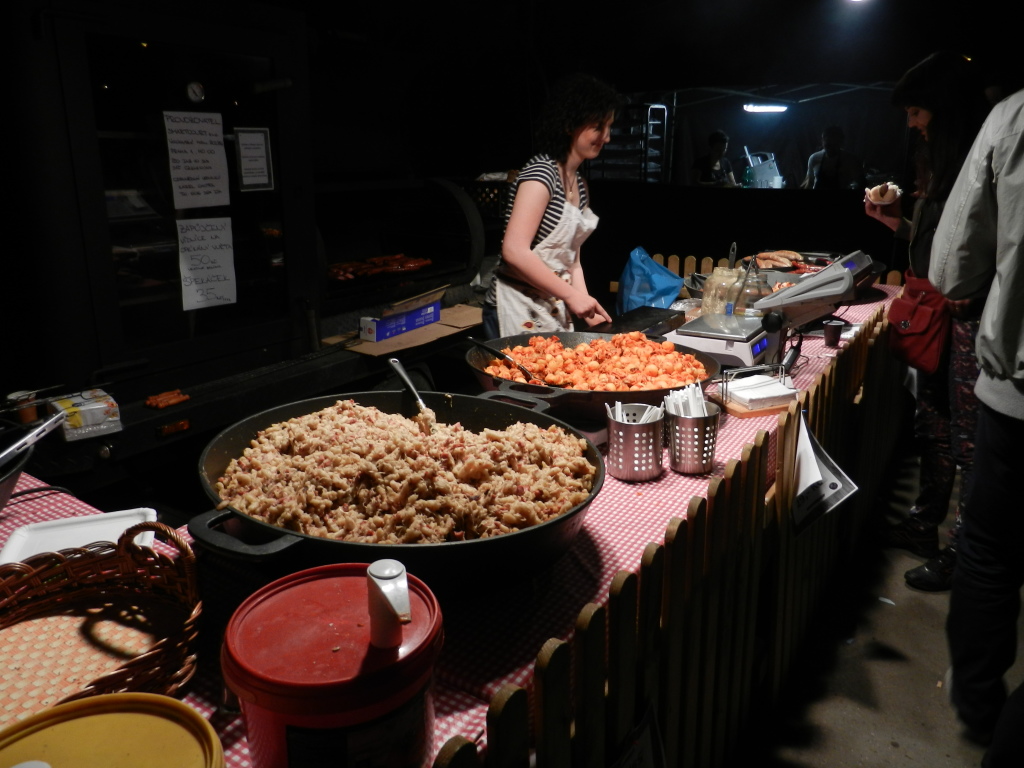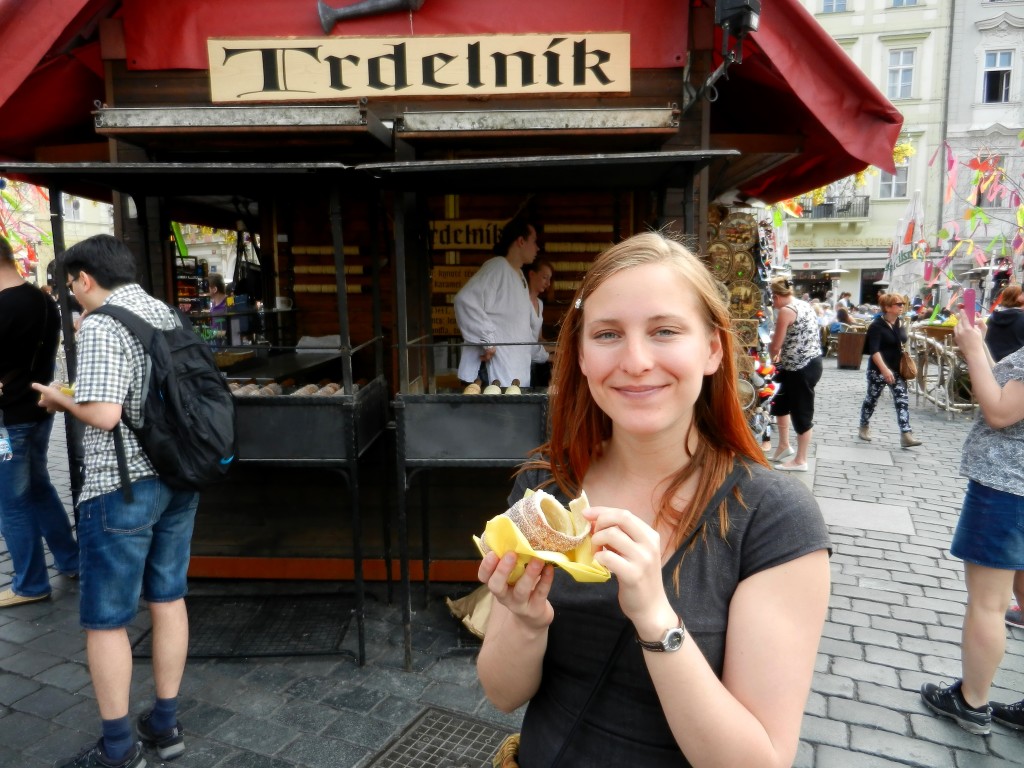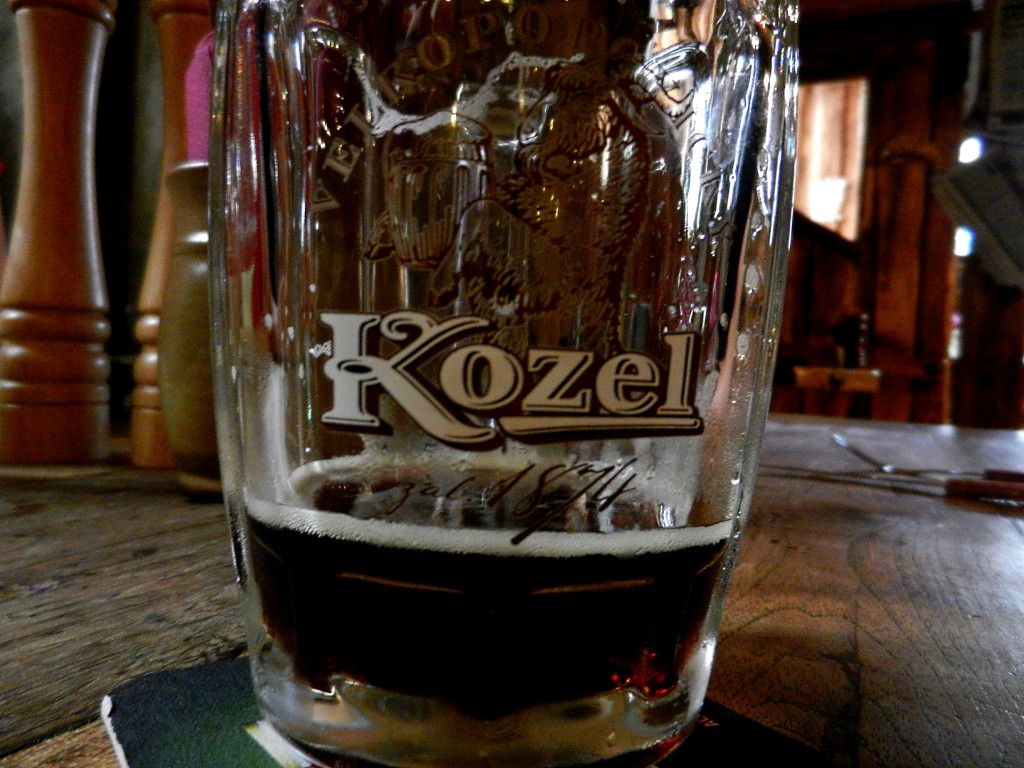What are we eating in… the Czech Republic!
It’s been awhile since I’ve written one of these so I thought it would be fun to post another delicious article to make everyone hungry! Food in the Czech Republic is hearty, meaty, and rich, and you WILL inevitably gain weight on your visit. Blending their own flavours with that of the neighbouring Balkan countries, Hungary, Germany, and others, popular Czech dishes and sweets can be found throughout Europe. Their beer alone could be an article in itself. But for now, enjoy this little glimpse into some food and drinks you need to try when you find yourself in Czech.
Guláš is a great place to start when speaking about Czech cuisine. Hungary boasts the similar “gulyás” (g00-laush) in its traditional repertoire, but Czech guláš is more of a stew compared to the soup-like Hungarian gulyás. Czech guláš is a hearty, meat-based creation usually made with beef but can also be made from pork or game. The meat is stewed with onions and spices (think paprika, garlic, pepper, cumin, etc.) and typically served with a side of bread dumplings, or houskový knedlík. These dumplings are spongy in texture but substantial and perfect for soaking up the broth in the stew. Soooo good– comfort food at its finest.
Unless you’re a garlic lover (like me, BIG TIME), you may find the idea of “garlic soup” or česnečka gives you pause. But trust me, you should give it a try at least once on our adventures through Czech! Some people claim it’s the perfect hangover cure, but probably not the best thing to eat on a work lunch. It’s a immune-system-loving, broth soup of (you guessed it) copious amounts of garlic, stock, potatoes, and spices and usually topped with croutons. The garlic becomes mellow and delicious after cooking (similar to roasted garlic, if you’ve ever tried), so don’t be afraid! Especially if you’re feeling a bit under-the-weather (or had a few too many Czech beers the night before), this soup is heavenly.
As I alluded to above, Czech cuisine is best appreciated by omnivores and meat-lovers. Not that there aren’t great vegetarian options out there, but man do they know how to cook amazing meat dishes. Pork is the most popular in the Czech Republic, dominating about half of the meat consumption. Roasted pork, pečené vepřové, is a pretty standard dish in a number of countries, but still worth mentioning because of how well the Czechs do it and that it’s considered traditionally Czech. This dish is seasoned with caraway seeds, mustard, pepper, and garlic, served along with a side of fluffy dumplings, sauerkraut (which you can buy by the vat-full by the way), and pilsner.
A favourite of myself and my brother especially, pečené vepřové koleno, or roasted pork knuckle, is a ridiculously large portion of meat that could probably feed everyone at your table, but you can’t keep from devouring it all yourself. With a tender, juicy inside and crunchy, fatty outside, it’s not for the faint of heart. Shared with German Bavarian cuisine as well, roasted pork knuckle is simple to make but tastes rich and delicious. Usually it’s flavoured with dark beer and herbs, served with an array of sides that could include bread, pickles, roasted vegetables, and horseradish.

For something a little lighter, try pečená kachna, Bohemian-style roasted duck. Bohemia is a large region of the Czech Republic famous for crystal, glass, and spa towns, not to be confused with the “bohemian” used to describe non-traditional lifestyles (“I see a little silhouetto of a man!”). Bohemian-style roasted duck, like the pork knuckle, is incredibly simple to make (the key spice is caraway seeds) and a delicious alternative to heavier dishes.
Ready for something sweet? If you find yourself in Karlovy Vary be sure to track down some karlsbader oblaten to nibble on as you stroll between spa appointments. These sugary wafers have been around for some time, but have evolved a fair bit since their inception. Originally, these were simple wafers sprinkled with sugar prepared by the chefs the spas to serve to their daily guests. Over time the wafers were layered on top of one another and spices were added, but apparently what really gives them their distinct flavour is the Karlovy Vary spring water and salt added to them (you be the judge). The first bakery to specialize in these little wafers opened in 1867, and today you can find them in chocolate and vanilla-hazelnut flavours packaged as perfect souvenirs for your friends back home.
Trdelník was one of the first treats we encountered on our arrival to Czech on Easter, and were actually our holiday treat as well when we came to Czech during Christmas! This is a traditional Slovak cake shared in the cultural heritages of a few countries, but is a pretty popular tourist treat in Czech and Slovakia. A sweet dough is wrapped around a stick and grilled (stands have these nifty rotating burners) before being topped with a sugar and nut mix or sometimes cinnamon. Sweet and cheap, the perfect treat when you’re strolling through the marketplace.
Houska, or Vánočka, depending on where you and who you ask, is a traditional Christmas bread that was another immediate favourite of ours. Think sweet, buttery bread filled with dried fruit, nuts, and raisins, begging to be slathered with butter and toasted, mmmmm! We were so sad when we left Brno and this tasty Christmas bread behind, but every once and awhile we manage to spot some on a shelf somewhere and devour it blissfully. Definitely something I need to bake when we make it home.
This next one is another creation between the Czechs and the Slovaks, and something they love to share with first time visitors. Kofola is nicknamed the Coca Cola of Czechoslovakia (the latter was largely unavailable during communist times), and has a sweet almost fruity taste. Kofola originally came about as part of a plan to use the surplus caffeine from coffee roasting, which was used to produce a syrup called Kofo that became the main ingredient for the soft drink. Less sugar than coke, but with more caffeine, you can get Kofola at any restaurant or supermarket in Czech.
Ahh, Absinthe. Yet another first impression I got from watching “Eurotrip“. Actually originating in Switzerland, this potent, traditionally anise-flavoured liquor probably isn’t for everybody, but especially in Prague they do their very best to appeal to every taste. You can find flavoured versions, different colours, absinthe in novelty bottles (think skulls, marijuana leaves, etc.), and even absinthe flavoured ice cream.The Bohemian-style “absinth” sets itself apart from the traditionally prepared absinthe produced in other countries by its lack of anise, fennel, and other herbal flavours, and instead is described as more of a “wormwood bitters”. Absinthe is derived from a variety of botanicals, but the one that bestows its infamy are the flowers and leaves of Artemisia absinthium, “Grande wormwood”. Absinthe was at one time portrayed as an addictive substance and a hallucinogen, people blaming small amounts of thujone for its negative effects. Consequently, but the beginning of the First World War absinthe had been banned in the United States and much of Europe. Recent studies, of course, proved that the psychoactive properties of absinthe were exaggerated, it was no more dangerous than other strong spirits, and absinthe is once again in most liquor stores in North America and Europe.
Last, but most certainly not least, you can’t write an article about cuisine in the Czech Republic without talking about that golden-hued lifeblood, beer. Czechs proudly boast the highest beer consumption per capita in the world, not to mention the world’s first pilsner, Pilsner Urquell. Most towns in Czech have at least one brewery, the most famous being Plzeň (home of pilsner!), Budweis (Budweiser!), and Prague (home to numerous delicious beers, including Staropramen). Honestly though, throughout the Czech Republic you can’t go wrong ordering a pint. Their beer is always super affordable, light, and perfect paired with all those amazing meat dishes mentioned above!













Ah Czech food! This post brings me so much happiness and nostalgia after living in Prague for exchange last year. Except for Kofola, that stuff is awful!
Glad that it brought back mouth-watering memories for you, Reanna 🙂 I bet that was an amazing exchange, Prague is a great choice!